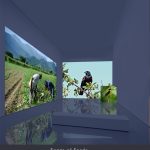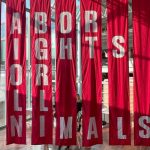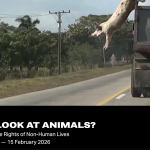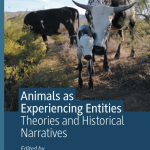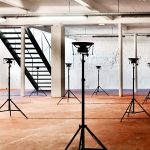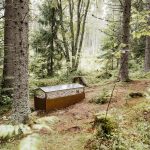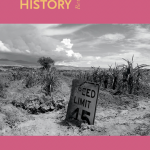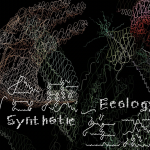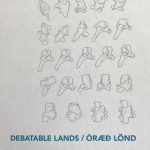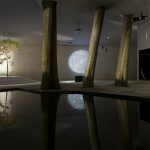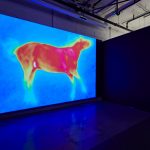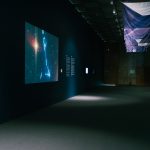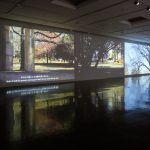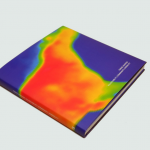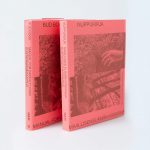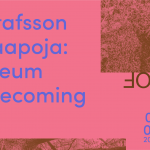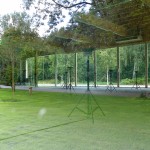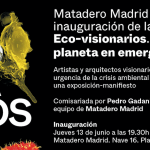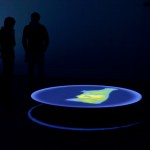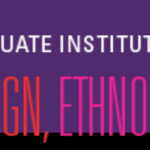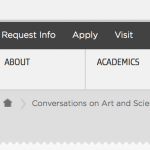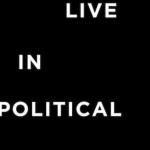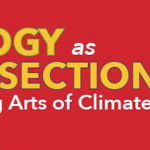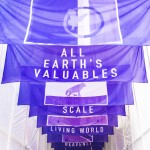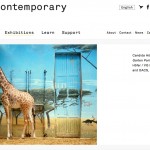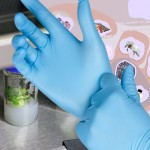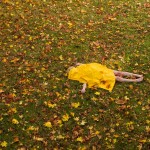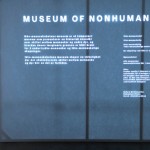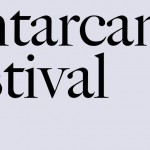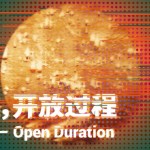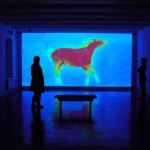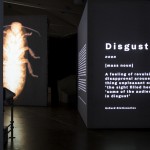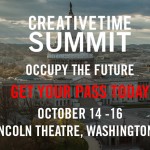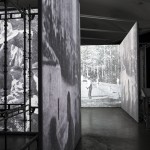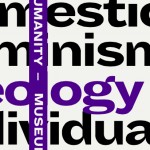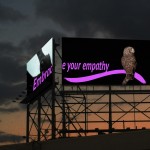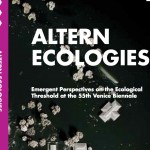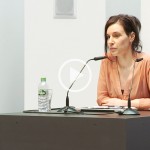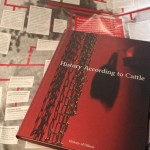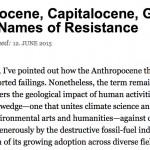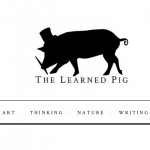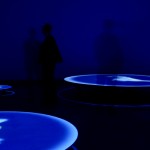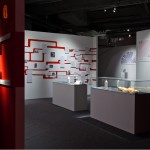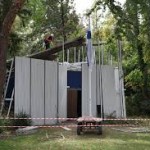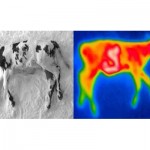Julkaistu: mustekala.info 20.5.2015
Jonna Hyry otti blogissaan kantaa tärkeään kysymykseen taiteilijoiden työn turvaamisen rahoituspohjasta ja taiteen rahoituksen suhteesta yhteiskunnalliseen kehitykseen. Aiheesta käytävä keskustelu on ensiarvoisen tärkeää juuri nyt, kun sekä taiteen että demokratian rooli markkinavetoisessa politiikassa on kriisiytymässä. Hyryn markkinaliberalistista retoriikkaa soveltava kirjoitus on oletettavasti tarkoituksella provosoiva, mikä tarjoaa hyvän lähtökohdan keskustelulle. Lähestyn seuraavassa aihetta oman taiteilijan kokemukseni valossa. Tämänhetkinen asuinpaikkani New York tarjoaa hyvän mahdollisuuden tarkastella lähietäisyydeltä sitä poliittista maastoa, jota kohti myös suomalainen valtavirtapolitiikka on kulkemassa, ja vertailla taiteen asemaa näissä erivaiheisissa kapitalismeissa.
Hyryn kirjoituksen yhtenä lähtökohtana on taiteen rinnastaminen muihin yhteiskuntapalveluihin tai tuotettuihin hyödykkeisiin. Kuten Marko Gylén toisaalla tässä lehdessä argumentoi, taide on kuitenkin tuote yhtä vähän kuin filosofia tai uskonto sitä ovat (joskin myös näitä yritetään nykyään sellaisiksi brändätä). Taide, filosofia, uskonto (enkä nyt puhu kirkosta), juhla, yhdessäoleminen, hyvä elämä ovat sitä, minkä takia yhteiskunta on. Ei ihmisyksilön eikä yhteisön ponnistelujen perimmäisenä tavoitteena ole vain “selviytyä”, sinnitellä hengissä, vaan elää, sanan vahvassa merkityksessä. Kollektiivisten järjestelyiden ydinmotiivina on mahdollistaa tila, jossa perustarpeiden tyydytyttyä hyvä elämä mahdollistuu. Yhteiskunnan kehittäminen, ilmiöiden havainnointi ja kriittinen ajattelu kuuluu oleellisesti hyvään elämään, ja mahdollistuu juuri siellä, missä yksilön ja kollektiivin voimat eivät ole sidottuja akuuttiin hengissäselviämiseen. Taide ei ole vain väline hyvään elämään, tai bonus jonka hyvä elämä mahdollistaa; taide on myös hyvää elämää itsessään. Tuotanto on tätä varten, ei toisin päin.
Taiteen samastaminen kaupallisen hyödykkeen tuottamiseen, joka syntyy vastaamaan johonkin markkinoilla olevaan tarpeeseen heijastelee tapaa, jolla talousteoria läpäisee nykyään koko yhteiskunnan. Kapitalistisen tuotantotalouden keskeinen piirre on muuttaa kaikki sille altistuva hyödykkeiksi, asioiksi. Ihmiset, eläimet, luonto, teot ja ajatukset ovat objektivoitavissa ja näin tuotavissa osaksi markkinoita. Niinpä myös taidetta helposti ajatellaan objekteina – enkä nyt viittaa vain taide-esineisiin, vaan kaikkeen taiteeseen. Mutta taide ei ole esine. Edes esinemäisin taide, pronssipää tai maisemataulu ei ole esine, ei palaudu esineeksi eikä synny esineen lailla. Se on perustavalla tavalla muuta. Taide on ajattelua ja kokemusta joka tapahtuu, tulee jaettavaksi materiassa, materian kautta. Siksi taiteen tekemistä aina edeltää ajattelu ja kokemus – maailmassa oleminen ja sille altistuminen. Se osa taidetta, joka tulee näkyväksi yleisölle, kriitikolla ja taidekauppiaalle on vain osa kokonaisprosessia; toinen osa jää näkymättömiin, siihen hiljaiseen maailmassa olemisen kokemukseen, josta teokset syntyvät. Ilman tätä näkymätöntä osaa ei ole taidetta, on vain esineitä. Taiteen rinnastaminen hyödykkeeseen rinnastaa myös taiteen kokijan kuluttajaan, joka passiivisesti vastaanottaa tuotteen sitä kriittisesti arvioiden sen sijaan, että taiteen kautta osallistuisi maailmaa ja yhteiskuntaa koskevaan ajatteluun.
Koska taide ei ole hyödyke, ei myöskään taiteen tekeminen ole tuotantoprosessi, vaikka näillä materiaalisia yhteneväisyyksiä onkin. Taiteen syntyminen edellyttää tilaa, jossa maailman ajattelu ja kokeminen ovat sekä tekijälle että vastaanottajalle mahdollisia. Yhteiskunnan kriiseissä yhteisö alkaa usein tuottaa tätä tilaa kollektiivisesti: vallankumousten ja muiden poikkeustilojen alla taiteella on erityinen yhteisöllinen merkitys. Rauhan aikana tämä ajattelun ja kokemuksen tila on turvattava toisin. Tästä on kyse taiteilijan työskentelyn taloudellisessa takaamisessa, sillä tämä tila ei aukea siellä, missä voimavarat kuluvat jokapäiväiseen selviytymiseen.
On tosiasiallinen harha, että hengissäsäilymistaistelun keskeltä syntyisi paras taide, ikään kuin vastoinkäymiset olisivat testi, jonka vain visionäärisin kutsumus läpäisee. Tunnustamamme taidekaanonin valtaosa on syntynyt olosuhteissa, joissa taiteilijan työ on tavalla tai toisella taloudellisesti turvattu. Luin vastikään Yhdysvalloissa tehdystä tutkimuksesta, jossa vertailtiin tuloeroja sukupolvien välillä ammattikunnittain. Ei ollut yllättävää, että kirurgit olivat rikkaimpia ja taiteilijat köyhimpiä. Kiinnostavaa oli kuitenkin se, että kirurgien ja taiteilijoiden tuloerot olivat suurimpia suhteessa vanhempiinsa, kirurgien ollessa huomattavasti keskimäärin matalapalkkaisia vanhempiaan varakkaampia, taiteilijoiden tulotason taas romahdettua yleensä varsin hyvätuloisiin vanhempiin verrattuna. Tutkimus kertookin jotakin paljon olennaisempaa kuin taiteilijoiden reaalisen tulotason: vaikka taiteilijat itse olivat keskimäärin köyhiä, he tulivat useimmiten taloudellisesti turvatusta, jopa yläluokkaisesta taustasta. Tutkimus kumoaa näin tehokkaasti myyttiä vapaasta pudotuksesta ja kilpailusta taiteen(kin) kasvulle parhaana alustana: itse asiassa juuri taloudellisesti turvattu tausta useimmiten tuottaa sen taiteen, joka lopulta myös nousee modernin taiteen kaanoniin.
Tutkimuksen piirtämä taiteen taloudellinen elitismi on todellisuutta Yhdysvalloissa, jossa vanhempien varallisuudella on suora suhde lapsen todellisiin opiskelu- ja elinmahdollisuuksiin. Mutta oleellista on, että jo pelkkä kokemus perusturvasta antaa uskalluksen antautua taiteen tekemiselle, vaikkakin se tarkoittaisi omien tulojen romahtamista. Perusturvan keskellä kasvanut uskaltaa ajatella ajatuksia, jotka ovat välitöntä selviytymistä laajempia, ja kokea maailmaa pelkäämättä sen tuhovoimaa. Pelkkä vaurauden tuottama luottamus elämässä pärjäämiseen kantaa.
Taiteen keskiluokkaisuus ja elitismi on keskeinen ongelma nykytaiteelle, etenkin sellaiselle taiteelle, joka pyrkii käsittelemään yhteiskunnallista epäoikeudenmukaisuutta. Suomessa vastaavan perusturvan on kuitenkin tarjonnut hyvinvointivaltio. Tämä “sosiaalidemokraattinen kokemus” on turvannut (periaatteessa) jokaiselle ne henkiset ja taloudelliset mahdollisuudet, jotka vakavaraiset vanhemmat turvaavat Yhdysvalloissa. Painotan tässä järjestelyn henkisiä mahdollisuuksia, sillä ajattelun uskallus on taiteelle yhtä välttämätöntä kuin fyysinen hengissä pysyminen (joka sekin on kohtalaisen suotavaa). Amerikkalainen ystäväni muistuttaa säännöllisesti minun puhuvan “ilmaisesta terveydenhuollosta käsin” kun paasaan kriittisen taiteen ja kokeellisuuden välttämättömyydestä. “Terveydenhuollosta käsin” voin tehdä muotokokeiluja, epäonnistua, radikalisoitua vanhoilla päivilläni. “Terveydenhuollosta käsin” voin laajentaa taiteellista omaatuntoani omaa selviytymistäni laajemmalle ja tuoda taiteeseen yhteiskuntavastuullisen ulottuvuuden. “Terveydenhuollosta käsin” suhteeni taiteen rahoittajiin ja muihin vaikuttajiin on tasavertainen. ”Terveydenhuollosta käsin” voin olla taiteellisesti riippumaton. Tämä riippumattomuus mahdollistuu samalla kynnyksellä kuin taide: siellä, missä selviäminen vaihtuu elämiseksi.
Kriittisen tilan kaventuminen
New York on luonnollisesti yksi maailman taidemaailmoista. Taidetta on, ja sitä on paljon, myös loistavaa sellaista, kun yksityiset galleriat ovat suomalaisen museon kokoluokkaa. Taiteen statusfunktio on kova kaupungissa, jossa kaikki haluavat tulla tähdiksi. Myös pikavoiton mahdollisuus houkuttaa, sillä iso raha on harvoja tapoja suojata itsemääräämisoikeus ja taiteellinen työnkuva. Rahaa liikkuukin taidemaailmassa ennennäkemättömiä summia. Kuitenkin taiteen todellinen yhteiskunnallinen merkitys on lähes olematon. Taiteen ydinfunktio, olla osa yhteiskunnallista keskustelua on lähes täysin trivialisoitunut. Poliittisesti tiedostavaa taidetta on, mutta se on koteloitunut omiin seminaareihinsa ja gallerioihinsa, pyörien kengännauhabudjeteilla tai kansainvälisellä rahoituksella suurten taidelaitosten ja kaupallisen galleriakentän ulkopuolella. Joka ainoa tapaamani yhteiskunnallisesti vähänkään sitoutunut taiteilija sanoo samaa, marginaalitaiteilijoista etabloituneisiin, aktivisteista professoreihin. Yhteiskunnallisesti sitoutunut taide on eristynyt valtavirran taidemaailmasta, eikä siinä käytävät keskustelut tavoita suurta yleisöä. Esteettisen kuplan läpäisevät vain rotukysymyksen kaltaiset suuret, yksilöimättömät yhteiskunnalliset teemat. Kuten taidekoulussa vuosikymmeniä opettanut professori asian ilmaisi: maa käy kolmea sotaa, tuloerot ovat maailman suurimpia, sosiaaliset ongelmat räjähtävät käsiin ja valtio käytännössä vararikossa, eikä taiteella ole käytännössä minkäänlaista todellista merkitystä näiden asioiden käsittelyssä. Syynä on, että taiteen rahoitus väistää aidosti kriittiset foorumit.
Taiteen roolin trivialisoituminen on osa laajempaa kansalaisyhteiskunnan trivialisoitumista. Occupy-liike oli Yhdysvaltalaisessa politiikassa merkittävä herääminen, jossa valtavirran ääni tuli hetkellisesti kuuluviin. Mutta maassa, jossa ei ole perusturvaa, ei ole aikaa istuskella loputtomiin puistossa. On mentävä töihin, maksettava laskut, ruokittava lapset. Tähän perustuu tehokas kansalaisvaikuttamisen alasajo. Tuloerojen kasvaessa protestiaalto ei kiihdy samaa tahtia, koska köyhin väestönosa köyhtyy entisestään; ei yksinkertaisesti jakseta pystyttää barrikadeja. Ja on muistettava, että barrikadeille lähteminen on ehkä ainoa keino saada äänensä kuuluviin, sillä äänestäminen ei politiikkaan vaikuta. Princetonin yliopiston paljon siteeratun tutkimuksen mukaan USA onkin demokratian sijaan oligarkia, jossa päätöksenteko vastaa rikkaimman vähemmistön mielipiteitä. Mitä köyhemmästä väestönosasta tulet, sitä vähemmän äänesi vaikuttaa. Lobbaamisen mittakaava on tähtitieteellinen. Politiikan ja yritysrahan kytkösten kiteytyminen näkyy kouriintuntuvasti korkeimman oikeuden päätöksessä, joka samastaa yritysrahan sananvapauteen, ja antaa yrityksille mahdollisuuden lahjoittaa rajoittamattomia summia poliittiseen kampanjointiin ilman ilmoitusvelvollisuutta. Kyse ei ole ainoastaan siitä, että ilman rahaa ei saa ääntään kuuluviin, vaan siitä, että kampanjarahan kanssa naimisissa oleminen naittaa poliitikot (kaikki, kauttaaltaan) yritysmaailman intresseihin. Vaikuttamisen kanavat ovat niin tukossa, että niitä ei ole mitään mieltä käyttää. Kukin selviytyköön kuten taitaa.
Edellä kuvatussa yhteiskunnassa taiteella luulisi olevan entistäkin suurempi rooli sosiaalisten normien kyseenalaistajana ja eettisen keskustelun foorumina. Mutta kun sekä keskeiset museolaitokset että galleriatoiminta on täysin taidekaupan ja yksityisten lahjoittajien varassa, kriittinen taide tulee ajetuksi nurkkaan. Muutama esimerkki: varhaisempien näyttelykonseptien uudelleentekeminen on viime vuosien trendikkäitä aiheita, ja New Yorkissakin on tänä talvena nähty kaksi. Historiallinen uudelleentulkinta natsi-Saksan Degenerate art – näyttelystä vuodelta 1937 Neue Galleriessa, ja minimalismin maamerkkinä toimineen Primary structures – näyttelyn (1966) reflektoiva uudelleen esittäminen The Jewish Museumissa asettavat kohteenaan olevat näyttelyt historialliseen kontekstiin, ja tekevätkin sen ansiokkaasti erityisesti kuratoriaalisen praktiikan lyhyen historian tarkastelussa. Nämä re-maket kuitenkin pidättäytyvät visusti kritisoimasta alkuperäisiä näyttelyitä tai haastamasta niiden historiallista merkityksellisyyttä. Neues Galleriessa ei kritisoitu natsien ryöstämien taideaarteiden päätymistä yhdysvaltalaisille keräilijöille, eikä Jewish Museumissa yhdysvaltalaisen taidekaanonin ja etenkin minimalismin räikeää sukupuolittuneisuutta ja etnistä homogenisyyttä. Toisin sanoen näyttelyt rakensivat historiallisten esillepanojen arvon päälle, nostivat tämän omaksi jalustakseen ja korostivat kritiikittömästi näyttelyiden teosten historiallista ja täten myös taloudellista merkitystä. Teosten ollessa lainoja yksityisistä kokoelmista ja museoiden itse pyöriessä keräilijöiden lahjoitusten varassa, muuta ei kai voi olettaakaan.
Kun taiteen omistussuhteet ovat liian tiiviisti yksityisten markkinoiden otteessa muuttuu sekä taiteen sisäisten mekanismien kritisoiminen että yhteiskunnan taloudellisen epätasapainon käsitteleminen mahdottomiksi. Aikaisempien sukupolvien ja niiden taiteen kritiikki kuuluu kuitenkin olemuksellisesti taiteen luonteeseen. Vain näin taide ja sen kautta tapahtuva ajattelu voi kehittyä. Taiteen arvon suojaaminen taloudellisten intressien varjelemisen tähden on tämän perustoiminnon halvaannuttamista.
Sisällön mahdollistaminen
Suomalainen taidekeskustelu näyttää New Yorkista käsin kuin toisesta maailmasta olevalta. “Kaupallisuuden” näkeminen vaihtoehtona, jonka voi olla valitsematta, on utopistinen täysin markkinavetoisesta yhteiskunnasta katsoen. Suomessa kaupallisuudelle on vielä olemassa vaihtoehto, jonka todellista yhteiskunnallista merkitystä ei pidä unohtaa. Kun ajattelen suomalaista taidekenttää, näen sitä hallitsevan suvereenin teknisen osaamisen ja korkean taiteellisen laadun. Koska markkinoita ei ole, taiteilijalla on vapaus tehdä teos juuri sellaiseksi kuin ajatus vaatii. Suomalainen taide onkin leimallisesti sisältövetoista. Omien projektieni kaltaisten tuotannollisesti pitkällevietyjen, tutkimuksellisten, poliittisten mutta myyntikelvottomien projektien näkeminen on amerikkalaisesta kulttuurista tuleville jollakin tavalla positiivisesti järkyttävää. Omani ja hyvin monen muun suomalaisen taiteilijan tekemä työ ei yksinkertaisesti olisi mahdollista täysin markkinavetoisessa maailmassa. Olen toki miettinyt myös, merkitseekö tämä sitä, että työni kuolisi muuttuvassa maailmassa pois evoluution lakien mukaisesti, parempigeenisten taidetekojen jatkaessa sukua. En kuitenkaan osaa ajatella vapaiden markkinoiden tuottavan erityisesti parempaa kulttuuria, etenkin kun Suomenkin uudet vientituotteet ovat siansaksaa puhuva lukiolainen ja vihaisten lintujen ampuminen. Pikemminkin nämä markkinat tuntuvat suosivan ilmiöitä jonkinlaisella idioottimaisuuskriteerillä, jossa paremmus määräytyy sen mukaan mitä enemmän ne ohjaavat huomiota pois maailman todellisista ogelmakohdista. Puhtaassa markkinataloudessa sellaiset hankkeet kuin Mustarinda tai Todellisuuden tutkimuskeskus, tai ne lukuisat taiteilijat ja kollektiivit jotka työskentelevät taktisen median, ympäristökysymysten, yhteiskuntakritiikin tai katoavien taiteiden alueilla kuihtuisivat pois tai vetäytyisivät lähes näkymättömiin kulttuurien marginaaleihin. Jäljelle jäisi vain se, mikä soveltuisi kansainvälisen taidemaailman kiertoon: tunnistettava, sovinnainen, estetisoitu, spektaakkelimainen.
Taide ei ole konsensusala, ja kilpailu huomiosta ja ideoiden suosiosta kuuluu väistämättä kulttuurin kehittymiseen. Kaupallisella taidemaailmalla, keräilijöillä ja filantroopeilla on tärkeä roolinsa taiteen säilyttäjinä, vaihtoehtoisten ilmiöiden esittelijöinä ja kulttuurin tukijoina. On kuitenkin harhaa ajatella, että rajoittamattomat markkinat tuottaisivat heterogeenisyyttä ja moniarvoisuutta. Ei ole suinkaan sattumaa, että kymmenen megaluokan korporaatiota omistaa lähes kaiken maailmassa: koko nykyinen järjestelmä ajaa tätä kohti. Materian, ajatusten ja tuotantoprosessien standardisointi on globaalikapitalismin perusta. Tämä pätee myös taidemarkkinoihin. Uskon vahvasti, että vain talouden sääntelyllä ja vahvalla julkisella tuella luodaan olosuhteet, joissa moniarvoisuus menestyy ja myös toiset äänet tulevat kuulluiksi.
Taiteen rahoitukseen Suomessa liittyvät nepotismikuviot, läpinäkymättömyys ja rahoituksen epätasainen jakautuminen ovat asioita, joita on keskusteltava ja joissa on paljon parannettavaa. Muun muassa Helsinkikeskeisyys, kuvataideakatemian valta-asema tai hyväveli- ja sisarverkostot ovat ongelmia, jotka konfliktipelkoiseen ja konsensushakuiseen kulttuuriimme yhdistettyinä tasapäistävät taidekenttää sen sisältä käsin. Kuitenkin monet kentän ongelmat liittyvät pikemminkin rahoitusperustan puolivillaiseen markkinatalouslogiikkaan kuin sen puuttumiseen. Vinoutunut tulosvastuullisuus ajaa painottamaan näyttelypaikkoja (tai rivejä CV:ssa) sisältöjen sijaan, ja tunnistettavat ilmiöt läpäisevät uusia paremmin sekä markkina- että apurahakoneiston. Korkeakouluihin viime vuosina rantautuneet laatukriteerit ovat vaikeita alueella, jossa sata liuskaa harvoja rivejä voi käydä elämäntyöstä (kuten vaikkapa nobelisti Wislawa Szymborskalla). Rahoituksen kaventuminen ja kasvavan taiteilijajoukon köyhtyminen tuottaa yhä enemmän kilpailua, jossa ajatusten jakamisen sijaan pyritään varmistamaan “oman tuotteen markkina-asema”. Kuitenkin taiteen, akateemisen tutkimuksen ja tieteen alueilla uusia ajatuksia versoo toden teolla juuri vaikutteita ja lähteitä mahdollisimman avoimesti jakamalla. Rahoituspaineiden alla “korkean taiteen” on myös yritettävä tehdä eroa DIY – ja amatöörikenttään, jotta oma erikoisosaaminen ei muuttuisi tarpeettomaksi.
Samaan aikaan monet kulttuurisesti ja taiteellisestikin kiinnostavimmat aloitteet tapahtuvat taiteen reunamilla tai kokonaan sen ulkopuolella: kaduilla, vallankumouksissa, verkossa, youtubessa tai laboratorioissa. Kun tulevaisuus usein syntyy siellä, missä valmiita polkuja ei vielä ole, on juuri näiden vielä muotoutumatta olevien alueiden eristäminen taiteesta kaikkien häviö. Monialaistuvassa yhteiskunnassa yhden luovan ammattikunnan tontin rajaaminen toimii lopulta itseään vastaan. Koulutukseen tai muihin meriitteihin sidottu taiteilijapalkka ei luultavasti poistaisi nykyisen järjestelmän ongelmia, vaan pahimmillaan poteroisi kenttää entisestään. Liian moni keskustelu on jo nyt juuttunut taidelajien tonttirajojen ja taiteen tekemisen mandaatin äärelle, jonkinlaiseen sosiaalidemokratian irvikuvaan, missä sisällöstä puhumisen sijaan taistellaan siitä, kenelle hupenevat valtionosuudet jaetaan. Oleellista onkin nähdä taiteilijoiden työ suhteessa yhteiskunnalliseen kehitykseen laajemmalti.Siksi tulisi turvata maasto, jossa kriittinen ajattelu, luovuus ja maailman kokeminen mahdollistuisivat mahdollisimman monelle. Esimerkiksi perustulon kaltainen rakenne siirtäisi keskustelua pois tulojen jakautumisesta kulttuurin sisältöihin: ei siihen, kuka saa ja voi tehdä taidetta ja millä mandaatilla (mikä on lopulta taas vain kysymystä rahasta), vaan siihen, minkälaista taidetta tehdään, ja miksi.
Taide on osa kansalaisyhteiskuntaa
Hyvinvointiyhteiskunnan ikääntyessä olemme kasvaneet pitämään korkeaa koulutustamme, terveydenhuoltoamme, perusturvaamme ja kaikkinaista valinnanvapauttamme itsestäänselvyytenä. Kun kansalaisyhteiskunnan toiminnot on delegoitu valtiolle, on maailman ajattelu ja kokeminen taiteessa voinut syventyä ontologisiin pohdintoihin ja mediakokeiluihin, johtaen suomalaista taidekenttää yhä hallitsevaan varsin epäyhteiskunnalliseen taidekäsitykseen. Käsillä oleva kriisi pakottaa meidät kuitenkin havahtumaan siihen, että taiteen tila, yhtä lailla kuin hyvinvointiyhteiskunta, ei ole itsestäänselvyys. Tässä mielessä (tämäkin) kriisi on mahdollisuus.
Taiteen poliittisen merkityksen puolustaminen ei tarkoita, että kaiken taiteen tulisi olla poliittista. Se tarkoittaa, että taide itsessään on osa poliittista, osa kansalaisyhteiskuntaa. Tätä tilaa me emme saa menettää. Ja vaikka hyvinvoinnin edellytykset turvattaisiinkin, menneeseen ei ole paluuta. Maailma ei enää ole se suljettu paikka, jossa hyvinvointiyhteiskunta ja taiteen tukijärjestelmä aikoinaan syntyi. Olemme kaulaamme myöten kytköksissä maailmanpolitiikkaan, -kauppaan ja ekologiaan. Oma kansallinen hyvinvointimme ei pelastu rajoja sulkemalla vaan kansainväliseen vastuuseemme sitoutumalla. Samalla tavalla taiteen sisäisiin resurssikiistoihin keskittymisen sijaan koko taidekentän tulisi politisoitua ja lunastaa roolinsa yhteiskunnan omantunnon ja eettisen keskustelun paikkana – pelissä ei ole vain taide, vaan koko kansalaisyhteiskunta, jonka osa taide on.
Hyvinvointivaltion turvaaminen ei tarkoita omaan turvallisuuteemme tuuudittautumista – päin vastoin, se vapauttaa meidät ajattelemaan yli oman hyvämme, ja ohi totutun ja turvallisen. Liian usein keskustelua taiteen rahoituksesta käydään vain sen ilmeisellä tasolla eli kulttuurin leikkauslinjojen äärellä. Kuitenkin leikkauspäätösten tullessa pöydälle syvärakenteet on jo ajettu läpi. Taidelaitosten ja niiden johtajien tulisi ottaa kuolemanvakavasti yhteiskunnallinen roolinsa kriittisten äänten foorumina, ja julkisesti haastaa päätöksentekijöitä valvomaan kansalaisyhteiskunnan säilymistä. Tämä ei tarkoita (vain) rahoituspäätöksistä valittamista, vaan taidelaitosten sisällöllistä autonomiaa uhkaavien poliittisten syvärakenteiden jatkuvaa, rohkeaa ja sitoutunutta kritisoimista. On oltava antautumatta retoriikalle, joka tekee julkisen sektorin alasajosta näennäisesti “yhteisen murheen”; taidelaitosten ei pidä hyväksyä annettuna talkoita, jotka ovat vain sumuverho pientä eliittiä hyödyttävälle, eriarvoistavalle talouspolitiikalle. Tämä tarkoittaa poliittista sitoutumista – vaikkei sitten puoluepolitiikkaan, niin yhtä kaikki politiikkaan pelkän kulttuuripolitiikan ulkopuolella.
Kysymys taiteen tekemisen rahoituspohjasta ei ole vain pientä yhteiskunnan marginaalia, taiteilijoita, koskeva asia. Se on perustava kysymys yhteiskunnan ydinelementtien säilyttämisestä elinvoimaisena, kriittisen ajattelun, kansalaisyhteiskunnan ja viime kädessä demokratian puolustamisesta. Siksi taidepolitiikka ei voi eikä pidä ajatella muusta yhteiskunnasta erillisenä asiana. Taiteilijuuden suojeleminen erillisenä tuotannonalana ja ammattikiltana hukkaa olennaisen: taiteen yhteyden kaikille kuuluvaan kriittisen ajattelun ja hyvän elämän mahdollisuuteen. Kun nykyinen poliittinen koneisto kylvää hyvää elämää yhä harvemmille ja jättää yhä useammat taistelemaan selviytymisestä, on yhä voimakkaammin pyrittävä kohti maailmaa, jossa ei vain selviydytä alati vetäytyvään tulevaisuuteen, vaan jossa eletään, sanan todellisessa merkityksessä.
